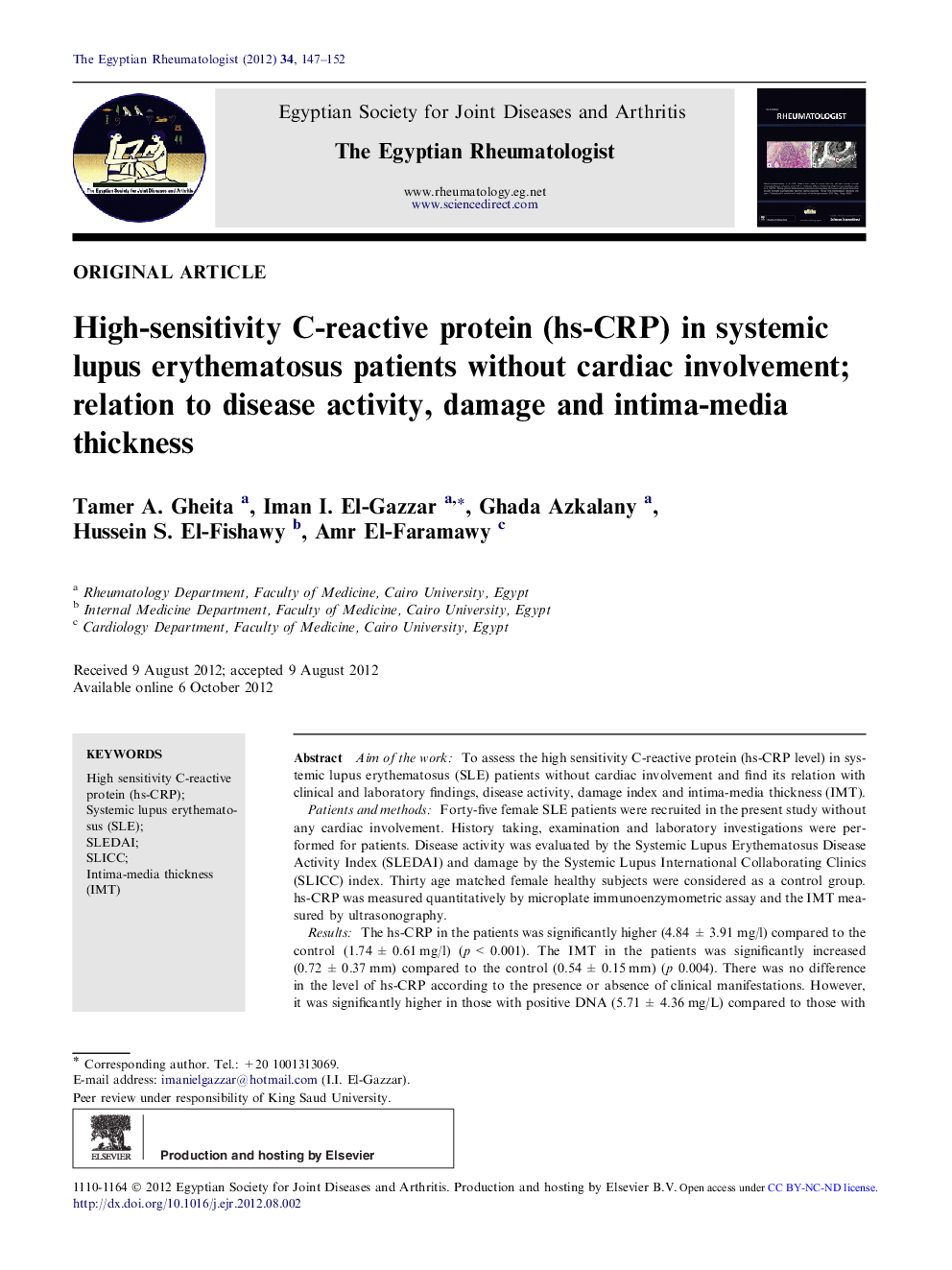| Article ID | Journal | Published Year | Pages | File Type |
|---|---|---|---|---|
| 3349083 | The Egyptian Rheumatologist | 2012 | 6 Pages |
Aim of the workTo assess the high sensitivity C-reactive protein (hs-CRP level) in systemic lupus erythematosus (SLE) patients without cardiac involvement and find its relation with clinical and laboratory findings, disease activity, damage index and intima-media thickness (IMT).Patients and methodsForty-five female SLE patients were recruited in the present study without any cardiac involvement. History taking, examination and laboratory investigations were performed for patients. Disease activity was evaluated by the Systemic Lupus Erythematosus Disease Activity Index (SLEDAI) and damage by the Systemic Lupus International Collaborating Clinics (SLICC) index. Thirty age matched female healthy subjects were considered as a control group. hs-CRP was measured quantitatively by microplate immunoenzymometric assay and the IMT measured by ultrasonography.ResultsThe hs-CRP in the patients was significantly higher (4.84 ± 3.91 mg/l) compared to the control (1.74 ± 0.61 mg/l) (p < 0.001). The IMT in the patients was significantly increased (0.72 ± 0.37 mm) compared to the control (0.54 ± 0.15 mm) (p 0.004). There was no difference in the level of hs-CRP according to the presence or absence of clinical manifestations. However, it was significantly higher in those with positive DNA (5.71 ± 4.36 mg/L) compared to those with negative results (3.12 ± 1.97 mg/L) (p 0.009). There was a significant correlation of the hs-CRP level with the IMT (r 0.49, p 0.001) and SLEDAI (r 0.67, p < 0.001).ConclusionsThese findings suggest that SLE patients without traditional major cardiovascular risk factors may have increased risk of future cardiac events. Measuring hs-CRP may be useful as a marker of disease activity, increased IMT and subclinical atherosclerosis in SLE especially those with positive ds-DNA.
